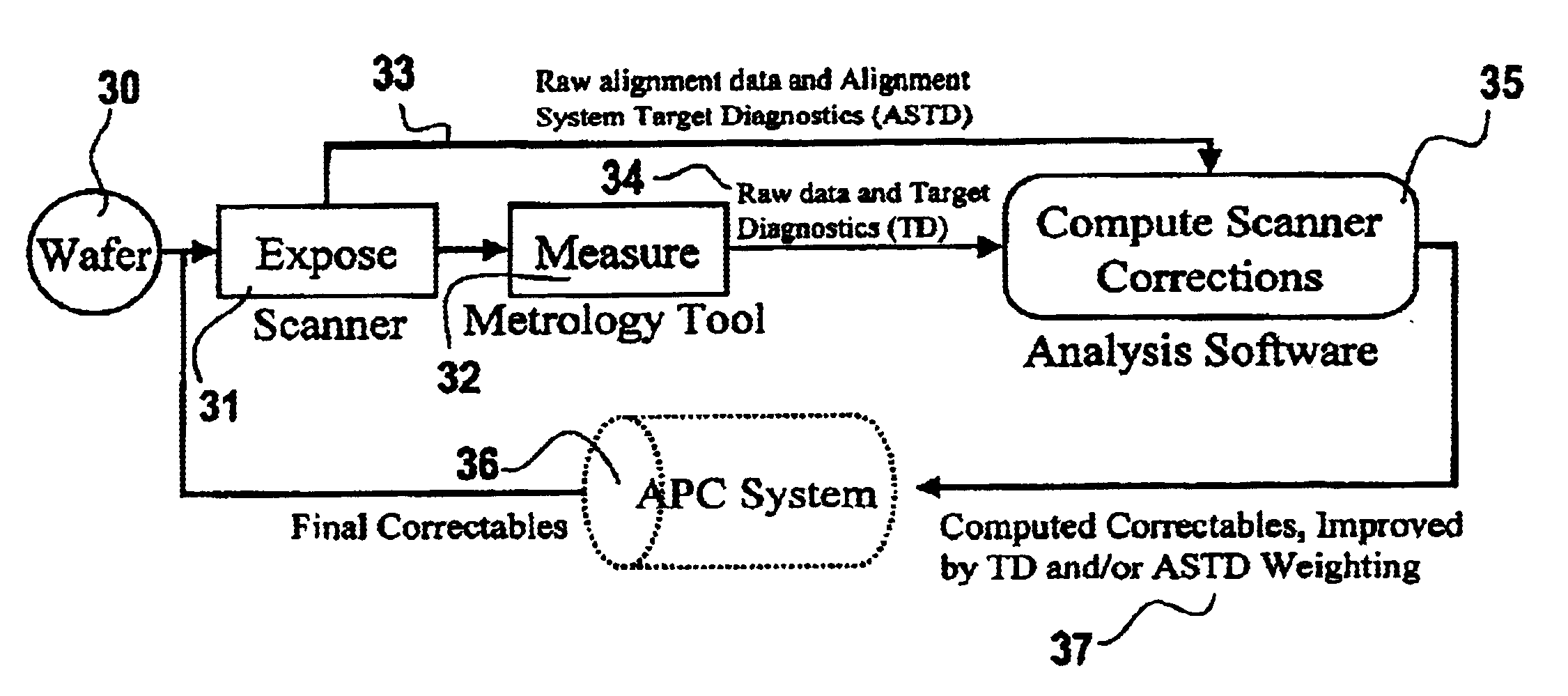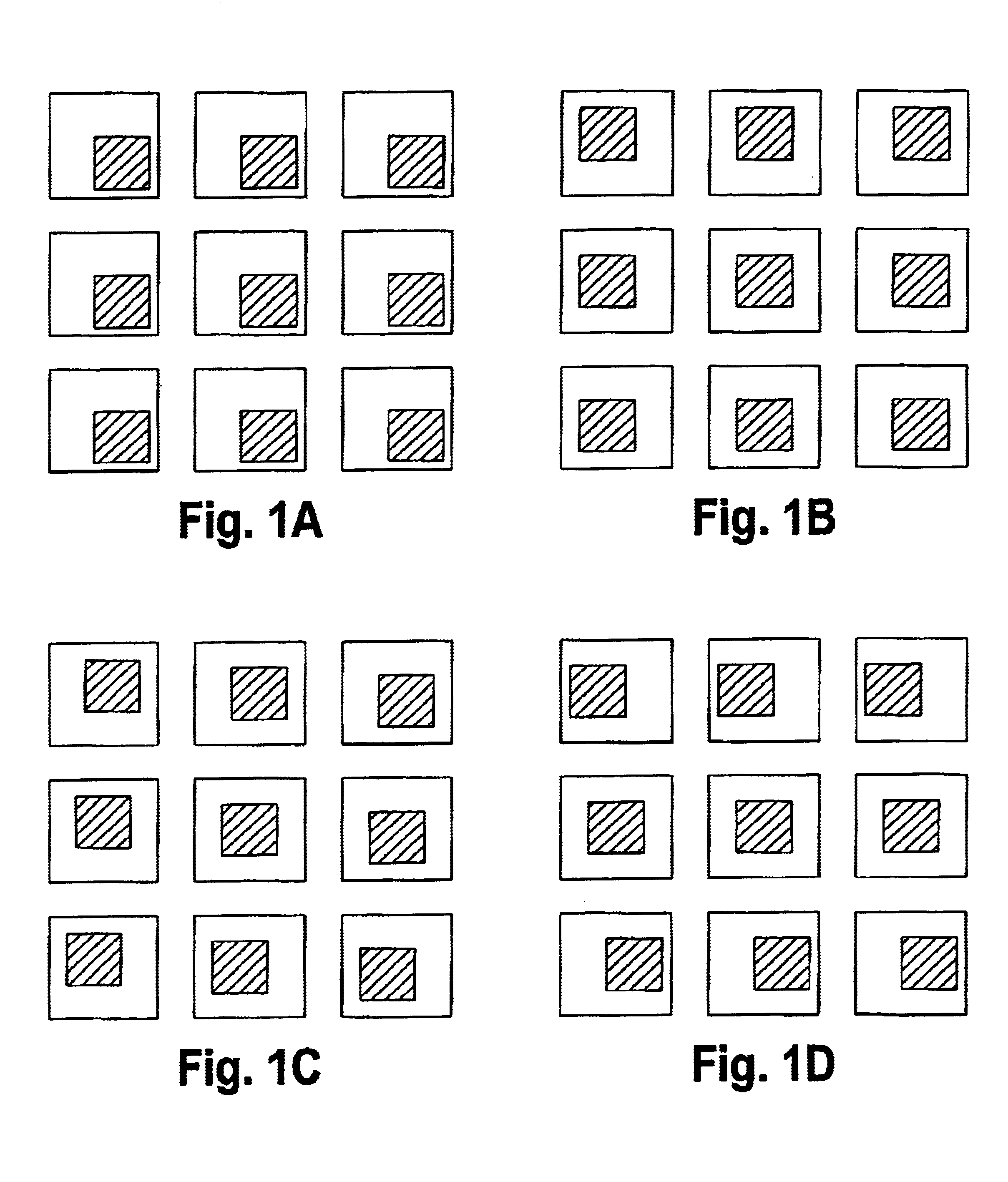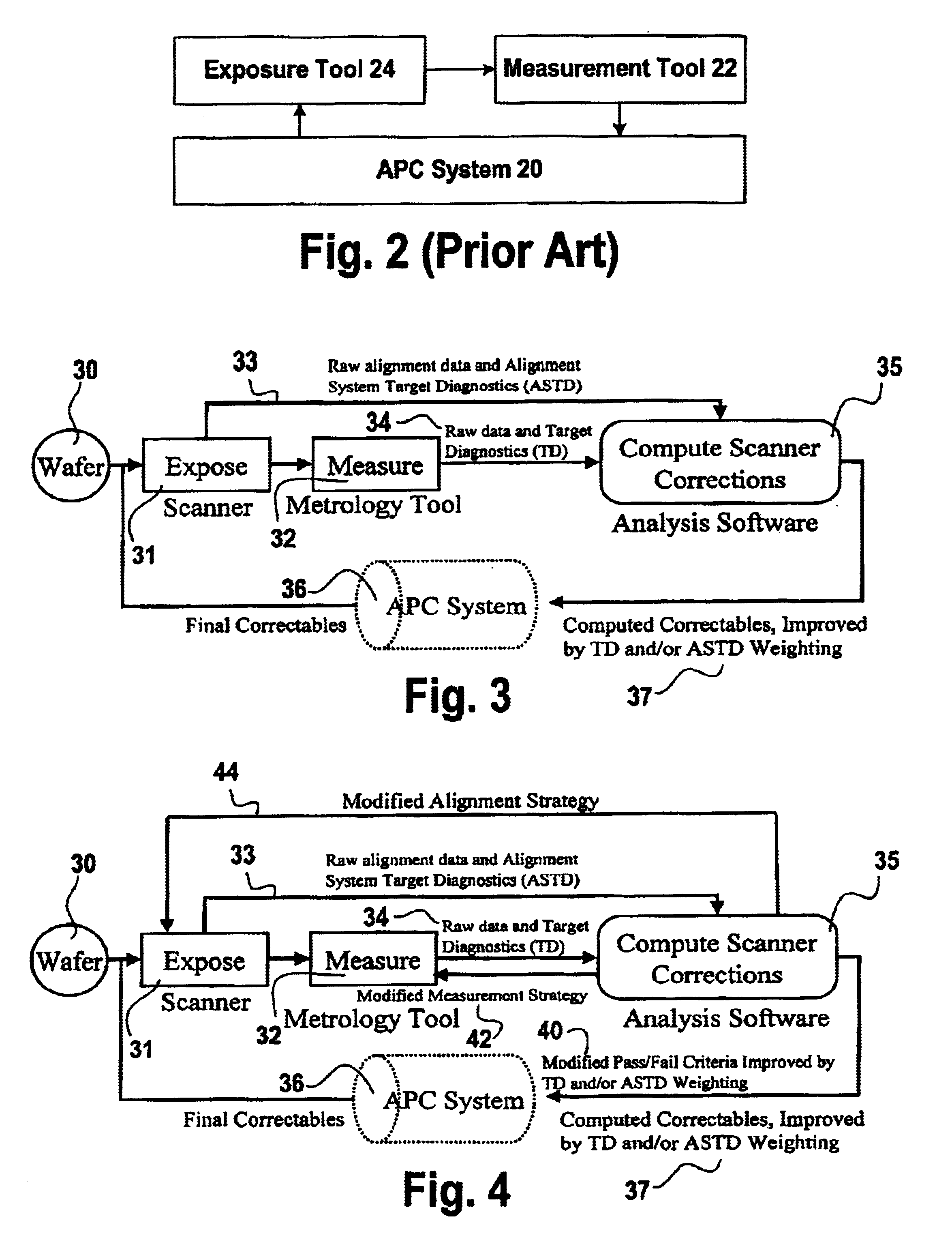Method and application of metrology and process diagnostic information for improved overlay control
a technology of process diagnostic information and overlay control, applied in the field of process control, can solve the problems of measurement inaccuracy, poor alignment between the two layers, and similar inaccuracy during the measurement process, so as to improve the accuracy of registration and improve the accuracy of overlay performance. , the effect of improving the accuracy of registration
- Summary
- Abstract
- Description
- Claims
- Application Information
AI Technical Summary
Benefits of technology
Problems solved by technology
Method used
Image
Examples
example 1
The TD values and the ASTD values may preferably be applied to weight the measured registration values prior to computing the first set of correctables. Conventionally, correctables are computed by fitting model equations at each measured point based on the raw data corresponding to the measured registration errors Δx and Δy as a function of their positions x and y within a field and the X, Y position of the field on the substrate and all of the points (Δx, Δy) are weighted equally. When only a limited number of points is measured, a few bad data points can lead to serious errors in the estimated correctables. In accordance with one aspect of the invention, weighting factors W(x,y) are determined for each point (Δx, Δy) from the TD and ASTD values according to a predetermined equation. An example of a preferred Equation 1 for determining weighting factors based on the TD values and the ASTD values is: MIN(∑(x,y)W(x,y)*((Δ x-(model Δ x))2+(Δ y-(model Δ y))2)where model ...
example 2
In accordance with another aspect of the invention, the TD and ASTD values are preferably utilized to weight the measured correctables in obtaining the final set of correctables, e.g., weighting the correctable value applied through the control loop of the APC System. In one embodiment, the correctables are preferably weighted based on the TD and ASTD values.
For example, if the ASTD values are determined to have relatively high confidence that the exposure tool aligned correctly, but the TD values indicate a lower confidence in the measurement, the weighting factor for that lot of substrates is preferably set to a relatively low value. On the other hand, if the TD values are determined to have relatively high confidence in the measurement while the ASTD indicates a lower confidence in the alignment quality, the weighting value is preferably set to a fairly high value. A preferred Equation 2 for determining a final set of correctables based on such weighting of the TD and ASTD values...
example 3
In accordance with yet another aspect of the invention, and as indicated by reference numeral 40 in FIG. 4, the metrics of measurement and alignment target quality are preferably utilized to modify the pass / fail limits for lots of substrates. Typically, users set a limit on overlay error, either a maximum measured or predicted value, or a 99.7% (3 sigma) value, above which the lot fails and must be put on hold for engineering, reworked, or scrapped. In accordance with the invention the TD and ASTD values may advantageously be used to modify these pass / fail limits. For example, if the TD and / or ASTD values indicate that the substrate was accurately aligned and that the substrate level overlay performance was accurately determined, then it may be determined to pass a lot even if the measured errors are relatively close to the limit value.
Conversely, if the TD and / or ASTD values indicate a low confidence in the accuracy of the alignment and measurement, then it is preferred to set a lo...
PUM
 Login to View More
Login to View More Abstract
Description
Claims
Application Information
 Login to View More
Login to View More - R&D
- Intellectual Property
- Life Sciences
- Materials
- Tech Scout
- Unparalleled Data Quality
- Higher Quality Content
- 60% Fewer Hallucinations
Browse by: Latest US Patents, China's latest patents, Technical Efficacy Thesaurus, Application Domain, Technology Topic, Popular Technical Reports.
© 2025 PatSnap. All rights reserved.Legal|Privacy policy|Modern Slavery Act Transparency Statement|Sitemap|About US| Contact US: help@patsnap.com



